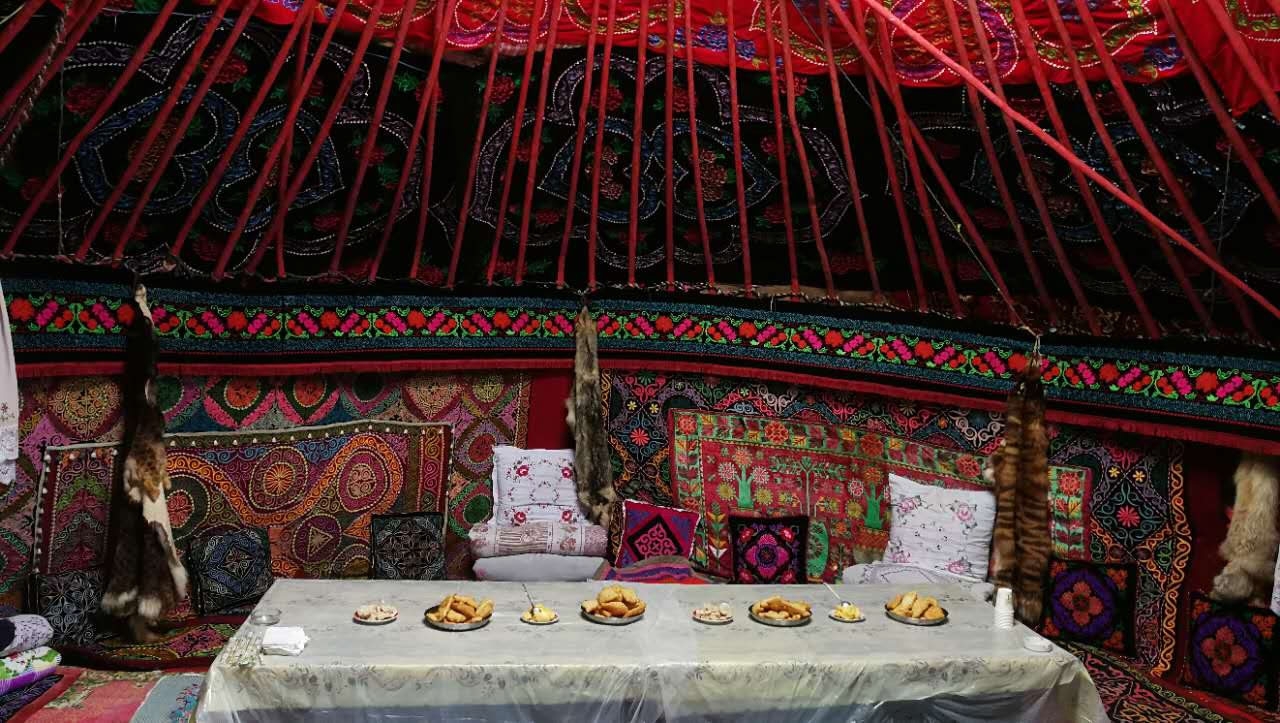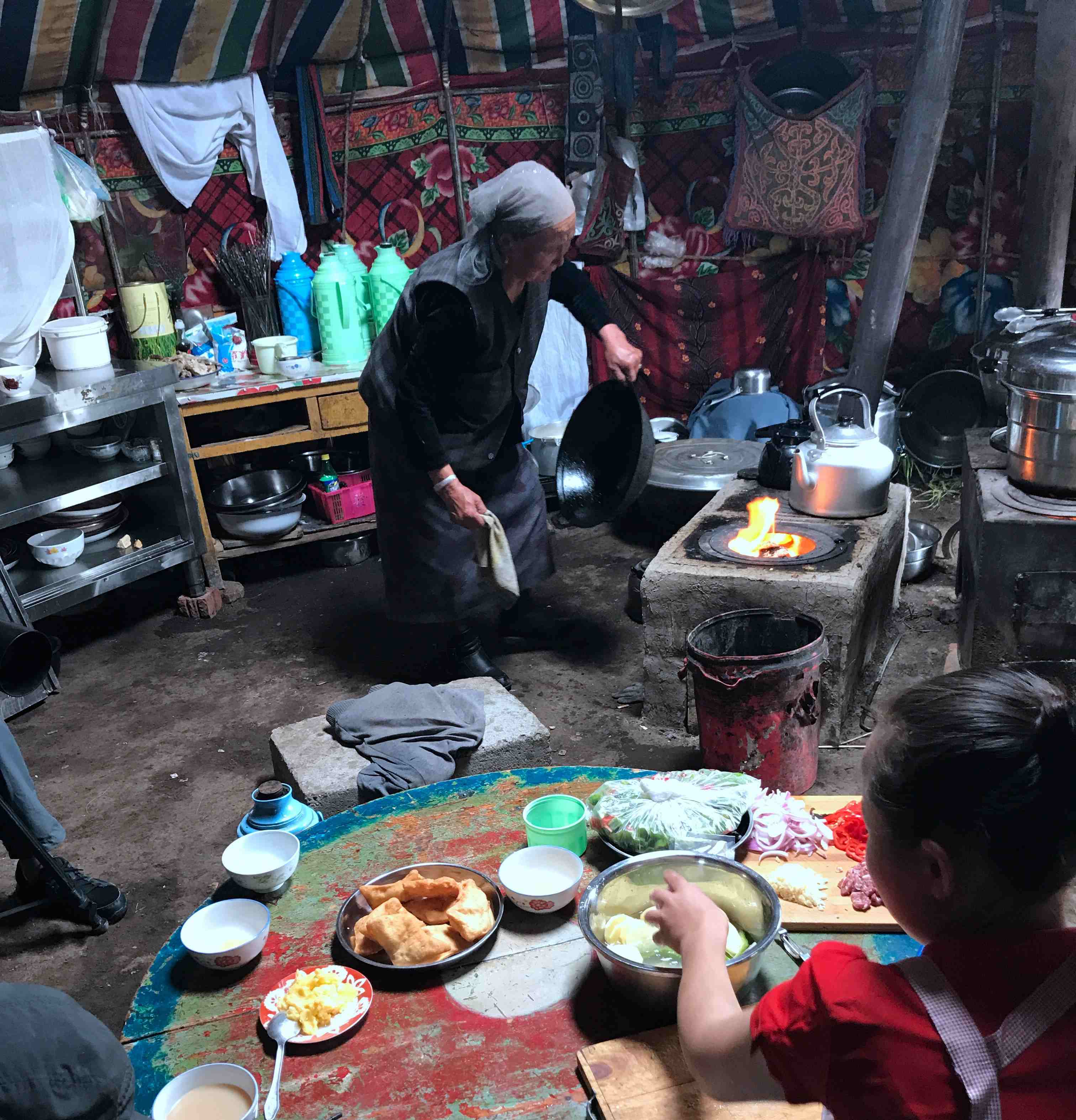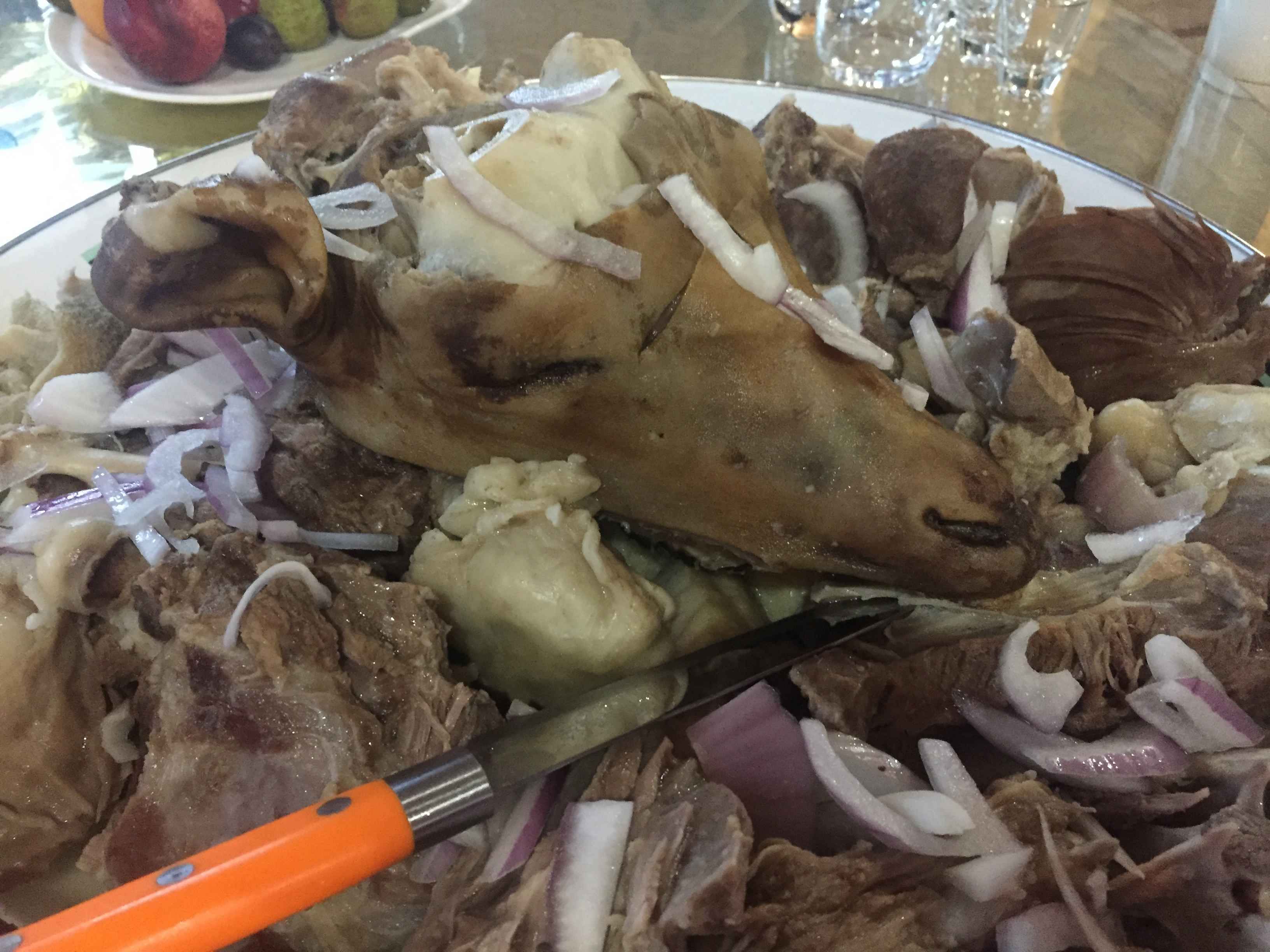By CGTN's Sun Ke & Min-Zhui Lee
The distinct smell of mutton simmering in a large pot wafts outside from the kitchen yurt in one of the tiny nomadic settlements peppered throughout China's Jimunai County, not far from the country's border with Kazakhstan.
Inside the bubbling cauldron – almost an entire sheep, including the head. On the stove next to it, is another large pot, where hand-pulled noodles are boiling. Together, they make up beshbarmak, one of the most popular Kazakh dishes.
Kazakhs are among the 56 officially recognized ethnic groups in China, numbering around 1.5 million. They mostly reside in Xinjiang Uygur Autonomous Region in the northwest of the country, which shares an approximate 1,800-kilometer border with Kazakhstan.

A dining table inside a traditional Kazakh tent. /CGTN Photo
Kazakh cuisine is traditionally focused on various dairy products, and four kinds of livestock: horses, camels, cows, and sheep, the latter being the most common.
Cooking techniques and major ingredients are strongly influenced by the nomadic way of life, for example, dried meat and sour milk for long-term preservation. Hot food preparation is based on boiling, like beshbarmark.

Local residents cook popular Kazakh dish beshbarmak at home. /CGTN Photo
Beshbarmak means “five fingers”, as it is customarily eaten with one’s hands. It is served in a big flat dish, with noodles blended with onions at the bottom, and mutton on top.
In the presence of visitors, the sheep’s head is presented facing the guest of honour. He or she will receive the best cut of meat – the tender cheek – and other guests will receive cuts corresponding to their status.

The sheep’s head is presented facing the guest of honor. /CGTN Photo
The rest of the animal is then expertly sliced and distributed, eaten with the noodles, and the remaining dishes served.









